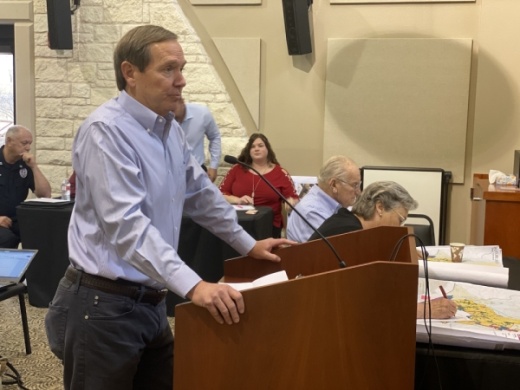As city officials describe it, the comprehensive plan will be a living document intended to guide the city on the bulk of its future decisions pertaining to significant issues, including zoning, future land use and transportation.
On Jan. 13, Larry Harlan, chair of Lakeway's Comprehensive Planning Committee, provided council with more specific goals within the next two months and said the timeline in the run-up to the March 16 deadline includes a proposed open house for public input at City Hall on Feb. 5 and submission to Lakeway’s Planning and Zoning Commission on March 4.
During a November update, city leaders and the Lakeway Comprehensive Plan Steering Committee discussed how best to proceed with revenue strategies moving into the next two decades and beyond. That discussion continued Jan. 13.
More than half of Lakeway is residential and 25% is greenspace, LPZC member Carolyn Nichols said. She explained that a sizeable chunk of the city’s revenue comes from property taxes and thus constitutes a major consideration in the composition of the comprehensive plan.
The Future Land Use Map, or FLUM, was also a point of discussion during the comprehensive plan update. The FLUM presented to council Jan. 13 showed a proposal with 1,964 acres of green space, 3,896 acres of residential space and 856 acres of commercial space.
Nichols said flexibility regarding the density of future developments should be considered as developers request it instead of designating areas as high- or low-density in advance.. She added that Lakeway’s definition of whether mixed-use developments should always include a residential component should also be considered.
“It seems like in the areas I’ve studied across Texas, high-density residential is always included in successful communities,” Nichols said.
Interim City Manager Julie Oakley pointed out the comprehensive plan needs to include consideration of revenue drivers as development slows once Lakeway approaches build-out.
Sean Garretson, a representative of Pegasus Planning and Development LLC, addressed council regarding changing city demographics and said a key change within Lakeway shows the percentage of its population between ages 35-44 has dropped by 40% since 2000 and that the median age went from 43.8 in 2010 to 47.7 in 2018.
"The impact of that fiscally is you may not be getting as much property tax from those folks as they claim senior exemptions," Garretson said.
Other data shows that 90% of Lakeway residents work outside of Lakeway, and 90% of workers employed within Lakeway live outside city limits.
These and other factors mean city leaders need to diversify their strategies pertaining to economic development, Garretson said.
As one example, Garretson said it would be beneficial to look into trying to attract more professional employers to Lakeway.
Also discussed during the Jan. 13 update was whether a tract along Hwy. 71 should be zoned as commercial, mixed-use or high-density residential in order to increase city revenue. Mayor Sandy Cox said she would be interested in looking into whether a mixed-use residential development might work in that area.
Population also factored in to the discussion. Nichols said over the next 20 years, Lakeway will likely reach a population 21,000 and 23,000. City leaders and council members are going to have to be thinking about higher-density population or other means of generating revenue in the next two decades, she said.
Nichols pointed out city leaders should be aware of and proactive regarding the kinds of businesses and revenue possible due to the redevelopment of RM 620, which she said she believes will be one of the most crucial elements of the evolution of Lakeway over the next several years.
"[RM] 620 will be the place to keep our eye on, and our goal here is to continue to be a mostly residential community with high-quality services," Nichols said. "So the juggle is going to be, "How do we do that?'"
The next step of the planning process involves the Comprehensive Plan Steering Committee emailing a draft of the plan to the Zoning and Planning Commission and City Council by Jan. 21.





